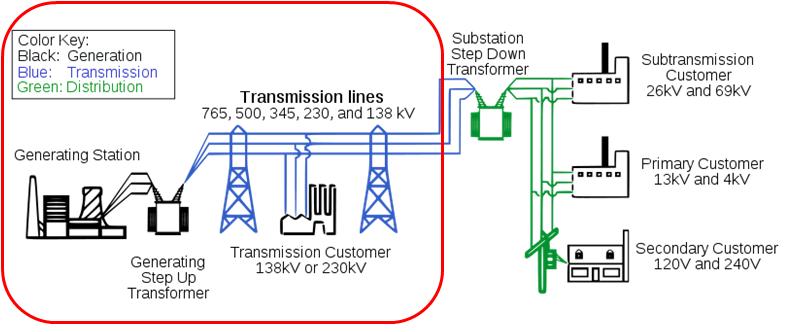Scope
The U.S. power grid has three primary operations—electricity generation, one way electric power transmission, and electricity distribution. Electricity generation takes place when electricity is produced through the conversion of material or another form of energy. Examples include thermal (fossil fuels, solar thermal, geothermal, nuclear), hydroelectric, wind, solar electric, and chemical energy. The generated electricity is stepped up prior to transmission. Electric power transmission occurs when electricity is transferred from one point to another in an electric power system. During electricity distribution, electricity is stepped down and distributed from the transmission lines to subtransmission customers first, followed by the commercial and local consumer.

As part of the project’s scope, the team had originally sought to determine whether a direct current grid would be more desirable than an alternate current option. As options were reviewed, it became apparent that the selection of DC vs. AC would require an extremely detailed analysis. The analysis would involve each individual grid transmission line segment and specifics regarding patterns of demand in each direction, concerning both voltage and current. Specifics regarding power line routes and loads would need to be carefully calculated. This level of detail would require detailed local analysis, which is outside the scope of the project effort. The team concluded that for the purpose of this exercise, an all AC grid would be assumed, simplifying grid balancing and streamlining cost analysis. The project development team determined the project would focus solely on two power grid operations: generation (the implementation of) and top-level transmission, which are depicted within the red box in the figure above.